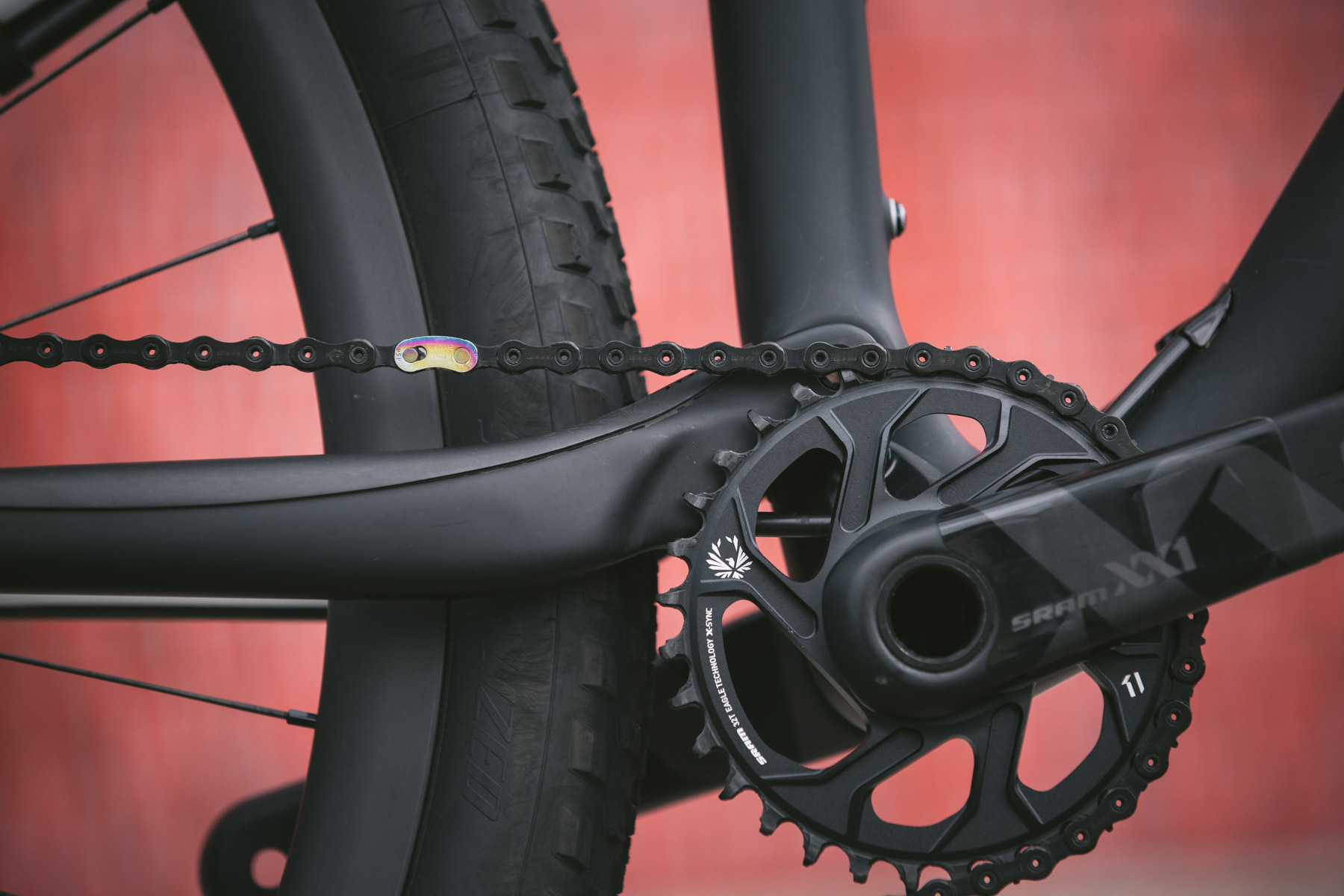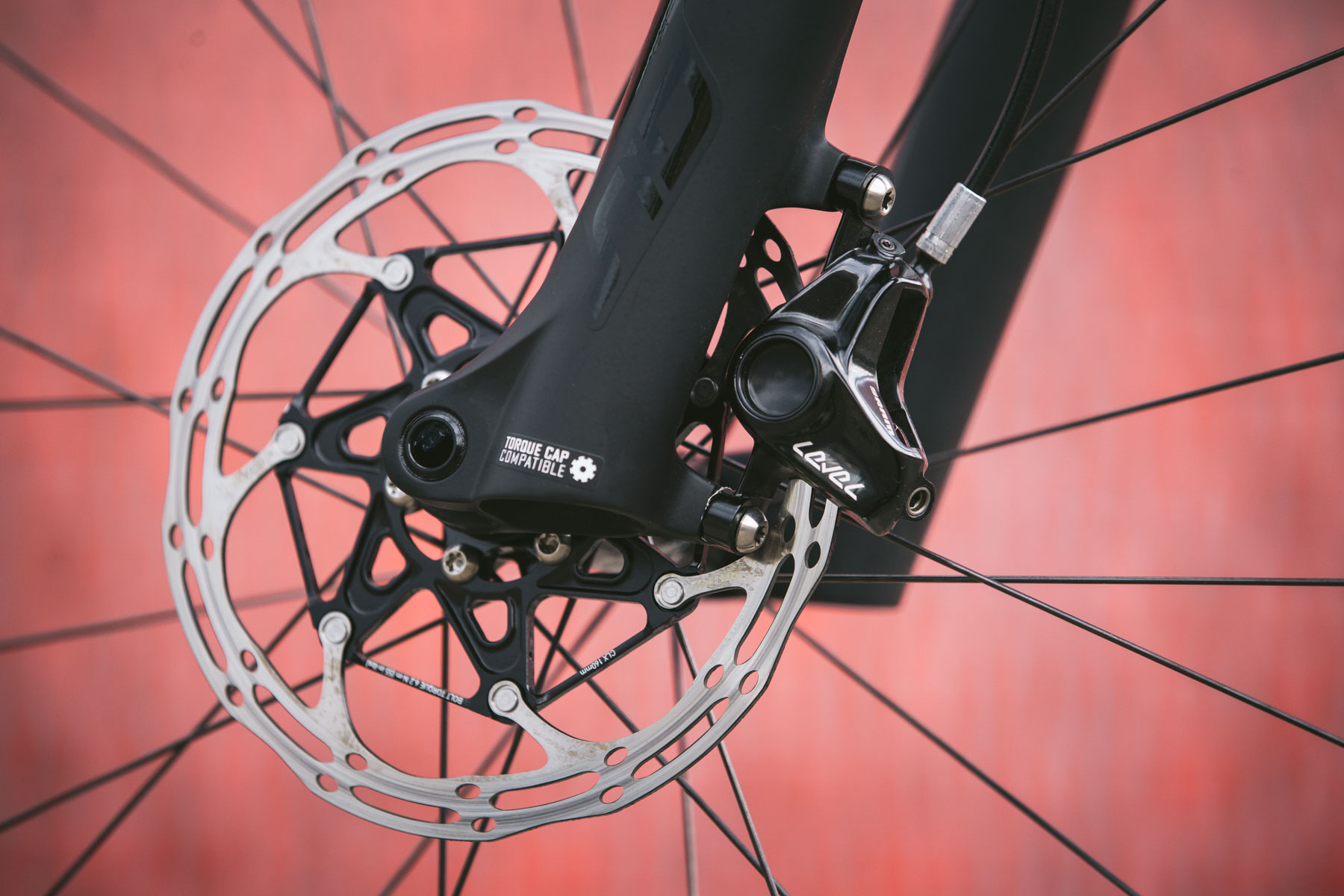A more epic Specialized Epic
As we said in our 2018 range overview, improving on the 2017 Specialized Epic was always going to be a tall order, but Specialized have pulled out all the stops. The result is a very fine race bike, built for the new generation of race tracks which demand more from riders and bikes than ever before.
At the heart of the Epic is the Brain, Specialized’s one-of-a-kind suspension platform, it sets it apart from the rest of the pack, nobody has a system like it. The Brain has stood the test of time, a testament to its effectiveness and how the cross country community has accepted it with immense popularity.


How light?
350g has been sliced out of the S-Works model Specialized Epic, and over 500g from the Expert level frame. Our medium size Epic weighs 9.58kg without pedals, very impressive! The most notable change, and one that let Specialized shed some of that weight, was the move to a flex stay system, rather than the traditional Specialized FSR link. Dropping a pivot makes for a lighter, stiffer and more durable rear end. Did we miss it? Not one bit.

You can read more about the changes to the Epic in our preview piece here.
Inertia valve… Sounds complicated, what is it?
The Brain… it’s a proprietary system from Specialized that aims to eliminate unwanted suspension activity, ensuring every ounce of your effort is converted into pedal power and not absorbed in the bike’s suspension – the holy grail of mountain bikes, ultimate efficiency. On paper, the Brain system seems like the perfect solution, but it’s not without its quirks.

Like the way triathletes obsess over aerodynamic performance in their equipment, top-level cross-country racers prioritise suspension efficiency and weight.
Via an inertia valve, the suspension responds to activity from the ground, not from the rider. It’s adjustable, too, in the firmest setting the bike feels totally rigid with no movement in the suspension when pushing down, only an impact from the ground in an upwards direction will activate it. The Brain is in both the RockShox SID fork and on the rear end also.
Like the way triathletes obsess over aerodynamic performance in their equipment, top-level cross-country racers prioritise suspension efficiency and weight.

For the 2018 Epic, Specialized collaborated with RockShox (previously the Brain shock was built by FOX) to develop the Brain 2.0 rear shock, a wholly revised unit that is said to react quicker to impacts for a smoother transition between open and closed. It’s a tiny little system, and worth having a closer look at its construction to appreciate the clever engineering fully.
Are your trails buff, singletrack flowing, do you dabble in gravel roads or considering entering the National XCO Series? The Specialized Epic is your tool to give back every inch off your effort in return.
Our thoughts on the Brain.
We’re not going to beat around the bush here, the Brain system polarised us and dominated most discussions about the bike. Each time we threw a leg over it, we would relish its incredible efficiency and acceleration speed, and on the other hand, we’d curse the way it punished our hands on rougher sections of the race track. We are well aware that it is built for all-out cross-country racing and not much else, and has won plenty of medals doing so, but blimey it isn’t sunshine and lollipops when the trail surface isn’t ultra-buff.

The Brain is adjustable, at both ends, but it’s not something that you can entirely turn off. The rear shock’s Brain Fade adjuster is way out of reach on the fly down behind the rear axle, the SID World Cup’s Brain Fade adjuster is on top of the right leg, easy to reach. In a perfect world we’d like to be able to turn it off with a remote somehow, but then that would detract from its incredible simplicity, argh, it’s not a perfect world, we know that ok…
Brain in the fork, do we need it?
It’s the fork that had us the most frustrated, does the Epic really need the inertia valve in the fork? Could the Epic be just as good with a conventional damper with a good range of slow speed compression?

The Brain out the back makes a lot of sense and seems to be more sensitive and faster to react that the fork. If we could have our way, we’d opt for a conventional FOX Fit 4 damper or a RockShox Charger 2 damper in the fork, with a three-stage lockout and slow speed compression adjustment.
We think preserving your hands is more valuable, so we’d forgo the Brain up the front, keeping it to the rear suspension only.
The current crop of top-end XC forks are excellent at discerning the difference between high and low-speed impacts so with a couple of dials of low-speed compression it lets you lean over the front of the bike and mash away without too much – if any – unwanted suspension bobbing. They don’t leave your hands feeling like you’ve been hi-fiving a busload of exuberant karate students.

Ok, so, we do appreciate how the Brain can make a suspension bike feel like a hardtail when you want it to but still helps you control the bike on technical sections, sure you could easily adapt and become used to it. And we unquestionably love how clean the whole system is with no remote lockout cables or clutter on the bars. But in comparison to other 100mm cross-country race bikes we have ridden, we think preserving your hands is more valuable, so we’d forgo the Brain up the front, keeping it to the rear suspension only.
Gender-neutral frame, gender-specific build.
A big point of emphasis from Specialized is that they’re moving away from women’s specific frames in 2018, and the Women’s Epic sees the end of an Era…or the Era to be more specific, the company’s previous women’s XC dual suspension offering.

Only a handful of distinctions remain between the Women’s Epic and the men’s model: a women’s front and rear suspension tune, the ladies Myth saddle (thankfully available in a less padded model on the S-Works build), a smaller 30-tooth front chainring instead of a 32, a different paint job, and that it’s only available in sizes small to large. That’s it, as far as we can tell. We were surprised to find that the stem length is the same relative to frame size, and the stock handlebar width is identical for the men’s and women’s rigs, leaving it up to the rider change the size if needed.

While both models look similar placed side by side, a standout feature for women, and any men needing a 16”/small frame size, is this is one of the only XC race bikes available at the moment with 29” wheels and space for two drink bottles. Most other major brands, with the most obvious exception being the Rocky Mountain Element, currently build their small sized, dual suspension XC bikes around 650b wheels and/or a vertical rear shock limiting space for a second biddon.

The mono-bottled Giant Anthem 29 is available in a small size, but the company’s brand for women, Liv, only offer the equivalent Pique in 650b. Trek’s Fuel EX 29 also fits one bottle and is only available in sizes 17.5” and above. This makes the Epic a desirable option for riders with marathon or stage racing aims, who prefer bigger, faster rolling wheels and onboard hydration to smaller rubber and a non-negotiable hydration pack.
[envira-gallery id=”108770″]
Enough Brain and gender chit-chat, how does the Epic ride?
A big focus on the new Epic was to improve its steering and handling. In our experience, this Epic has to be one of the best handling 100mm travel 29ers available. For a bike so light and fast up the climbs, it manages the descents way better than it should. It first became apparent when we took on a series of switchback turns downhill, where turning so hard and using the front brake, we’d expect a sharp-angled race bike to understeer and dive, but it felt quite the opposite. We were able to truly haul ass into corners leaning right over the front of the bike to carve through the turns with astonishing speed.
In our experience, this Epic has to be one of the best handling 100mm travel 29ers available.
There is so much room to move too, the wide bars and roomy top tube means there is a lot of bike in front of you and a strong position to brace yourself with, for those moments when you want to lay off the brakes and milk the terrain for more speed.

The head tube is super-short, too, that will please even the meanest racer with a low handlebar height. And for 2018 the Epic took one step away from the traditionally narrow handlebars and tyres found on cross-country race bikes, so we found ourselves sitting pretty comfortably on the type of bike that would historically be hard to spend more than a couple hours in the saddle on.
Dial the Brain Fade adjuster towards the firmer end of the spectrum, and you are presented with a suspension bike that pedals like a hardtail; we’re not talking crap here, there is no hint of any energy-sapping bounce or wallowing, it’s full steam ahead with each pedal stroke. That feeling is absolutely fantastic. There’s no need to lock or unlock your suspension or risk forgetting about it and drop into a downhill with your suspension still locked accidentally.

There’s no need to lock or unlock your suspension, or risk forgetting about it and drop into a downhill with your suspension still locked accidentally.
Despite its perfect finish, we were surprised to find the Epic quite noisy on the rougher descents, though, the super-large and stiff chainstay’s proximity to the chain was the cause of chain slap and even paint chips on the frame behind the rubber guard. If it were our own, we’d be experimenting with adding more rubber protection in that particular area.
Sleek, slick, sexy.
Aesthetically the Epic is an elegant bike to look at, Specialized value clean bikes and this new steed is about as slick as they come. With only three cables going up to the bars, and the Brain’s hose travelling very neatly through the little suspension linkage, it’s a bike that will please the most finicky purists with its ultimate cleanliness and simplicity.

There are provisions for a dropper post, too, with internal routing and we can imagine plenty of riders will take up this option to further expand this bike’s spectrum of use.
With only three cables going up to the bars, it’s a bike that will please the most finicky purists with its ultimate cleanliness and simplicity.

The black and white paint job is kinda bland in our opinion, the lower spec and women’s Epic models are way flashier, but that’s just our taste, it does look smart. We do like the way it keeps the logo branding to a minimum, and it’s actually hard to find the word Specialized in many places anywhere on the bike and parts. But keep an eye on the wheels, the stickers were peeling in multiple places with our bike, quite unexpected considering how meticulously well-finished everything else is.
All the good parts. All of them.
It’s an S-Works, there is no expecting anything else but the absolute best, especially for $12500. Like most Specialized bikes, there are more in-house components than not, with only the brakes and drivetrain that you’d find on other brand bikes. This kit is supreme, from the carbon wheels right down to the grips. There’s so much carbon in this bike; if it were ever exposed to fire, only a small handful of shiny bits would be leftover.

The SRAM Eagle XX1 drivetrain scores a fat ten out of ten from us; we have a set on our long-term test bike, it’s a system as close to perfect as we’ve ever experienced. The SRAM Level Ultimate brakes are also a great option for XC racing.



The Fast Track tyres have significant volume and a very supple casing, so when we are really hooking into a turn, they track the ground and conform to the surfaces providing exceptional traction on hard and dry trails. We’d keep a front tyre with a deeper, more open tread pattern on hand for wetter or softer surfaces, just to be sure.
What parts would we change if we were to take it racing? Nothing. But, there’s racing and then there’s riding. If it were ours to keep, we’d look into fitting a regular RockShox Charger 2 damper in the fork, and a dropper post, to make it a bit more friendly on rougher trails.

Are you up for it?
The Epic is a high-end bike that will suit a high-end rider. While they have made considerable improvements to the way the bike handles rougher terrain and therefore widening its scope, there is still no ignoring the fact that it’s designed to race, and that’s what it does so well. Racing a few times a year, but spend the majority of riding time enjoying the trails with friends? Then don’t rule out the Specialized Camber as a worthy option, which uses a traditional fork and shock in the super-supple and efficient FSR suspension design.
Are your trails buff, singletrack flowing, do you dabble in gravel roads or considering entering the National XCO Series? The Epic is your tool to give back every inch off your effort in return.
Verdict

This bike is seriously impressive, it rips through singletrack way faster than it should for a bike that climbs so well. While we didn’t love the Brain entirely on all race tracks we tested it on, we appreciate the way it is as close as it gets to the ultimate efficiency in a simple and user-friendly manner. It’s smart engineering too, and the latest iteration is better than the past, but we just aren’t sold in the system in the forks, but we know that sentiment comes from our particular taste of how we like the suspension to behave.

The price? Yes, $12500 is about as expensive as it gets, no doubt about that. Poor value in comparison to other big brands? Yes, though it’s not hard to see how much they have worked to improve an already excellent bike, and there is no stone unturned when it comes to the best parts, and it’s 9.58kg, remember!
You’d be mad not to consider the Epic if you’re serious about racing, it’s seriously fast.